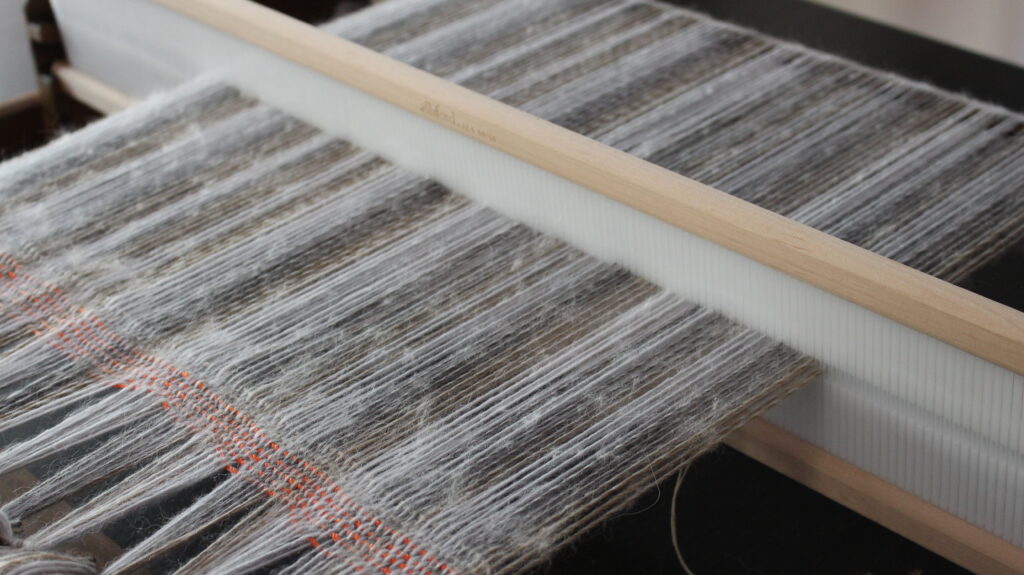Choosing the Wrong Warp Yarn For Weaving
Have you ever fallen in love with a particular yarn? I did! Have you ever gotten your hearth broken by this same yarn? I sadly did too. I while ago, I bought two beautiful skeins of yarn that I was saving for a weaving project. However, it turned out that the yarn was not suitable for warp and it led to a disaster project! Watch this tutorial to see what happened when choosing the wrong warp yarn for weaving! Hopefully, you will not be making the same mistake that I made.
Disclaimer: Links included on this page might be affiliate links. This means that if you purchase a product or service with the links that I provide, I may receive a commission. Please note that there is no additional charge to you. This helps me keep going and create more tutorials.
The yarn of this disaster project was actually some fluffy one ply acrylic yarn. It seemed like it would resist to tension, but it did not pass the friction resistance test. Still, I was stubborn (or in love, or a little of both). I wanted to see if I could actually weave with it. It was a terrible mistake!

During the first steps of warping, everything was going well. Things got complicated when I started winding it onto the back beam. The warp threads were experiencing their first real friction with the heddle and they did not like it. Some parts of fiber, or fluff as I like to call them, started to fall from the thread. Some of the fluff started building up on the heddle which created even more friction.
After I winded about 1 meter, the friction was so intense that some threads started to break. For the next meter and a half of warp, I had to be very careful. I could only crank a few inches at a time. Then, I had to stop and to remove all the fluff that was accumulating on the heddle. This took forever! You could tell that the threads were getting thinner and weaker as the fluff was coming out.
Still, the worst was yet to come!

If you are looking for actual good warp yarn, you can check out The Woolery website through this link: https://woolery.com/yarns.html?aff=214 They have a wide selection of yarn. If you have trouble choosing, I recommend cotton because it’s resistant to tension and to friction! It’s a great go-to.
I finally managed to roll all the warp onto the back beam. Then I attached the warp and I was ready to weave. Only, the warp threads did not cooperate. The yarn was so sticky that I could not get a clean shed, neither in the up position, nor in the down position. Every time I moved the heddle, I had to manually separate the threads in order to create a shed. If I had not been very careful, the threads would have stayed stuck together and this could have created floats.

At first, I was determined to weave as long as all as I could, just to see how far I could get before the threads started breaking. But it was way to painful to weave with all the stickiness. I quit after eight rows.

The only thing left for me to do was cutting the whole thing off. It was painful, but it had to be done! I had to end this disaster. This is why I kept all the threads into a bag. I will repurpose them as filling for a pillow in a next project. I still had about 1 ball of the yarn left. This will be used in a next project as well, but this time as weft! I learned my lesson: a disaster happens when you choose the wrong warp yarn for weaving!
Take Your Weaving Further

Weaving a Man Scarf on a Rigid Heddle Loom
Watch this quick tutorial on how to weave a man scarf using a random pattern on a rigid heddle loom.

5 Tips for Neat Selvedges
Learn how to improve your selvedges with 5 easy tips! In this tutorial, learn everything you need to know the achieve nearly perfect edges